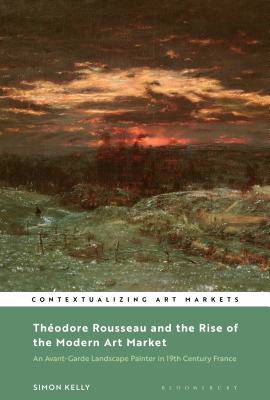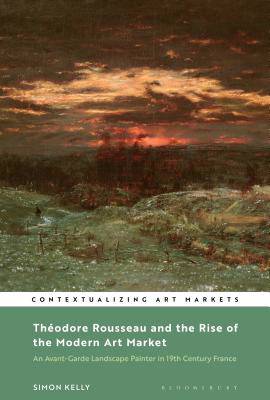
Je cadeautjes zeker op tijd in huis hebben voor de feestdagen? Kom langs in onze winkels en vind het perfecte geschenk!
- Afhalen na 1 uur in een winkel met voorraad
- Gratis thuislevering in België vanaf € 30
- Ruim aanbod met 7 miljoen producten
Je cadeautjes zeker op tijd in huis hebben voor de feestdagen? Kom langs in onze winkels en vind het perfecte geschenk!
- Afhalen na 1 uur in een winkel met voorraad
- Gratis thuislevering in België vanaf € 30
- Ruim aanbod met 7 miljoen producten
Zoeken
Théodore Rousseau and the Rise of the Modern Art Market
An Avant-Garde Landscape Painter in Nineteenth-Century France
Simon Kelly
€ 137,95
+ 275 punten
Uitvoering
Omschrijving
The 19th century in France witnessed the emergence of the structures of the modern art market that remain until this day. This book examines the relationship between the avant-garde Barbizon landscape painter, Théodore Rousseau (1812-1867), and this market, exploring the constellation of patrons, art dealers and critics who surrounded the artist. It argues for the pioneering role of Rousseau, his patrons and his public in the origins of the modern art market, and, in so doing, shifts attention away from the more traditional focus on the novel careers of the Impressionists and their supporters. Drawing on extensive archival research, the book provides new insight into the role of the modern artist as professional. It provides a new understanding of the complex iconographical and formal choices within Rousseau's work, rediscovering the original radical charge that once surrounded the artist's work and led to extensive and peculiarly modern tensions with the market place.
Specificaties
Betrokkenen
- Auteur(s):
- Uitgeverij:
Inhoud
- Aantal bladzijden:
- 272
- Taal:
- Engels
- Reeks:
Eigenschappen
- Productcode (EAN):
- 9781501343797
- Verschijningsdatum:
- 29/07/2021
- Uitvoering:
- Hardcover
- Formaat:
- Genaaid
- Afmetingen:
- 157 mm x 236 mm
- Gewicht:
- 757 g

Alleen bij Standaard Boekhandel
+ 275 punten op je klantenkaart van Standaard Boekhandel
Beoordelingen
We publiceren alleen reviews die voldoen aan de voorwaarden voor reviews. Bekijk onze voorwaarden voor reviews.









